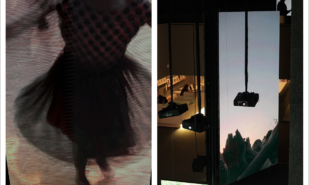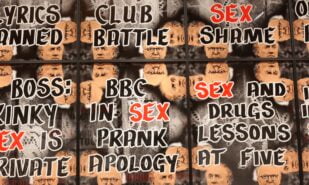In the context of modern drama, it’s quite natural to feel a bit anxious about attending a theatre performance. This is particularly true when the play recreates the life of the Welsh modern hero Aneurin (yes, Nye is short for Aneurin, not New Year’s Eve) Bevan, a liberal politician, a proponent of socialist views and an idealist. Those who are fearless should peruse the synopsis, which contains phrases such as “National Health Service” and “British Welfare”. However, the mention of a “Surreal Journey” in the same synopsis intrigues, and the names of the director, playwright, and actors on the poster exude a vibrant allure.
Nye: The Art and Excitement on the National Theatre Stage
Nye: The Art and Excitement on the National Theatre Stage
As the lights in the hall dim, preconceived scenarios dissipate; visual imagery captivates the mind, preventing it from wandering. The stage, which looked dull and flat under the lights, suddenly changes, unveiling its full depth, as mesmerizing as the perspective in the early Renaissance paintings, reflected in the eyes of the spectators of that time. The effect of switching between the voluminous and the flat, the profane and the majestic, the realistic and the fantastical is exploited by the director Rufus Norris throughout the play, but never grows monotonous, thanks to theexpressive acting, the witty original text, and the meticulous scenography.
“Nye” is a rare kind of a production where the plot recedes, allowing the universal art of storytelling, the movements, and the language itself to sparkle. To such an extent that the semantic load or moral message (everything must have meaning!) becomes unnecessary, vanishes by the miracle of transformation. There is an element of childlike wonder in it, as if a magician has suddenly entered a room full of adults. By the way, the main character, played by Michael Sheen, performs the whole show in a single pair of pajamas, portraying either a dreamer detached from the world, an eternal child, or perhaps the very magician, a master of disguise.
By the end of the first act, it becomes apparent that the actors and everyone involved, both creatively and technically, have joined the show for the sheer joy of it, showcasing their best skills purely for enjoyment. This enjoyment is far from selfish, as the audience also reaps its benefits. To contribute to the overall mischief, the objects renounce their original functions:on stage, hospital beds transform into doors, tables roll around, and curtains align to mimic parliamentary tribunes.
The number of stage props is reduced to a minimum, so every detail resonates within the musical system of the performance. One of the brightest (literally and figuratively) examples is the episode where post-war Prime Minister Clement Attlee (Stephanie Jacob) offers Bevan the position of Minister of Health and Housing, pulling out a red briefcase from his desk. This briefcase is truly symbolic, really red, blazing (I even suspect that the stage designersintentionally “spared” the red for this moment), shouting about responsibility, potential opportunities, and the impending challenges that await the future owner in the progression of his career.
Rufus Norris draws us into a realm of enchantment and restless imagination while also creating a cosmopolitan, prejudice-free theatre,where there is room for buffoonery, flirting with the audience, Broadway-style musical scenes, modern video projections, and classical theatre. Compositionally, these elements appearcohesive, as if bound by talent and refined by a shared creative approach to the subject matter. Numerous episodes of the show are embellished with original solutions, sometimes deliberate and ostentatious, but always valuable to the viewers, who have witnessed a multitude of them will never regard the evening they overcame their anxiety to attend the performance about the “National Health Service” and the “British Welfare” as a wasted one.




